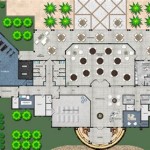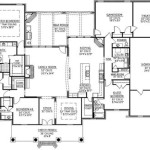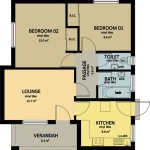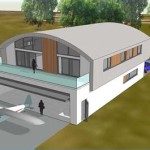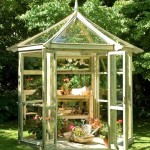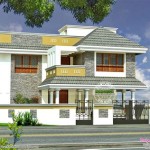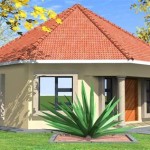Bungalow Floor Plan Design: Optimizing Space and Style
Bungalows, with their charming single-story layout and often-quaint architectural details, have enjoyed enduring popularity. This enduring appeal stems from their efficient use of space, cozy atmosphere, and adaptability to various lifestyles. When designing a bungalow floor plan, careful consideration of functionality, aesthetics, and the specific needs of the residents is paramount. This article explores the key elements of bungalow floor plan design, providing insights into maximizing space, enhancing flow, and creating a home that perfectly reflects its occupants' preferences.
Optimizing Space in a Bungalow Floor Plan
Bungalows, by their nature, often feature smaller footprints compared to multi-story dwellings. Maximizing space becomes a priority, ensuring every square foot serves a purpose while maintaining a sense of openness and flow. The following strategies prove invaluable in achieving this objective:
- Open Concept Living: Eliminating interior walls between the living room, dining area, and kitchen creates a sense of spaciousness. This open layout allows natural light to flow freely and visually expands the space. However, careful planning is crucial to ensure distinct zones are defined for different activities, preventing a cluttered or overwhelming feel.
- Strategic Wall Placement: While open concepts are desirable, strategically placed walls can define different areas within the house. For instance, a half-wall separating the kitchen from the dining area can provide visual separation while still maintaining an open feel. Similarly, a wall with built-in shelving can serve as a room divider while offering storage solutions.
- Built-in Features: Built-in shelves, cabinets, and window seats maximize storage while adding character. They seamlessly blend into the architecture, minimizing visual clutter and maximizing usable space. Built-in features can be customized to accommodate specific needs, from bookshelves in the living room to a cozy nook for reading.
- Clever Storage Solutions: Incorporating storage solutions like pull-out drawers, hidden cabinets, and under-stair storage is essential. These concealed spaces minimize visual clutter, allowing for a tidy and organized living environment.
Creating a Flowing and Functional Layout
A well-designed floor plan prioritizes flow, ensuring easy navigation, and effortless movement between different areas. The following considerations aid in achieving this objective:
- Traffic Patterns: Understanding how people naturally move through the house is paramount. The layout should facilitate smooth transitions between frequently used areas, like the kitchen, living room, and bedrooms, minimizing unnecessary backtracking.
- Centralized Kitchen: Placing the kitchen in a central location ensures easy access from other rooms, making it the heart of the home. Ideally, it should have ample counter space, cabinetry, and a layout that promotes efficient cooking and meal preparation.
- Dedicated Entryway: A defined entryway serves as a welcoming space, providing a sense of arrival and creating a transition between the outside world and the interior. It can include features like a coat rack, storage bench, or a mirror, adding both functionality and aesthetic appeal.
- Natural Light and Ventilation: Bungalows should capitalize on natural light and ventilation. Large windows, skylights, and strategically placed doors allow light to penetrate the interior, creating a bright and airy atmosphere. Well-placed windows ensure proper ventilation, promoting a healthy indoor environment.
Designing for a Distinct Style
Bungalows are known for their charming and often rustic aesthetics. However, they can be adapted to myriad design styles, from traditional to contemporary. Understanding the desired aesthetic is essential in creating a bungalow floor plan that reflects the homeowners' taste.
- Traditional Bungalow Style: Features like exposed beams, vaulted ceilings, and a large front porch create a classic bungalow ambiance. The use of natural materials like wood and stone adds to the rustic charm.
- Modern Bungalow Design: This style combines the cozy appeal of a bungalow with clean lines, minimalist elements, and open floor plans. Large windows, bright colors, and contemporary furniture add to the modern aesthetic.
- Rustic Bungalow: Embracing the outdoors, this style often features exposed brick, wood accents, and a color palette inspired by nature. A fireplace and a large covered porch are key features, creating a comfortable and inviting atmosphere.
While the above guidelines provide valuable insights, consulting with an experienced architect or designer is crucial for creating a bungalow floor plan that meets individual needs and preferences. A professional can guide the design process, ensuring the plan optimizes space, maximizes flow, and reflects the intended style, resulting in a truly personalized and enjoyable living environment.

Free Lay Out And Estimate E Bungalow House Floor Plans Simple Designs

Small House Design Shd 2024007 Pinoy Eplans One Y Bungalow Plans Floor

Small House Design 2024005 Pinoy Eplans Modern Blueprints Plans

Plan 76346 Modern Style With 2 Bed 1 Bath House Plans Beautiful Es Design

Small Bungalow House Plans

Three Bedroom Apartment In 2024 Denah Rumah Desain Piantine Di Case Architettura Moderna Casa Lusso Da Sogno

House Plan Terra Valley Sater Design Collection

Small Bungalow House Plans

Your Guide To Bungalows What Is A Bungalow House And More Houseplans Blog Com

Bungalow House Plans We Love Blog Homeplans Com

